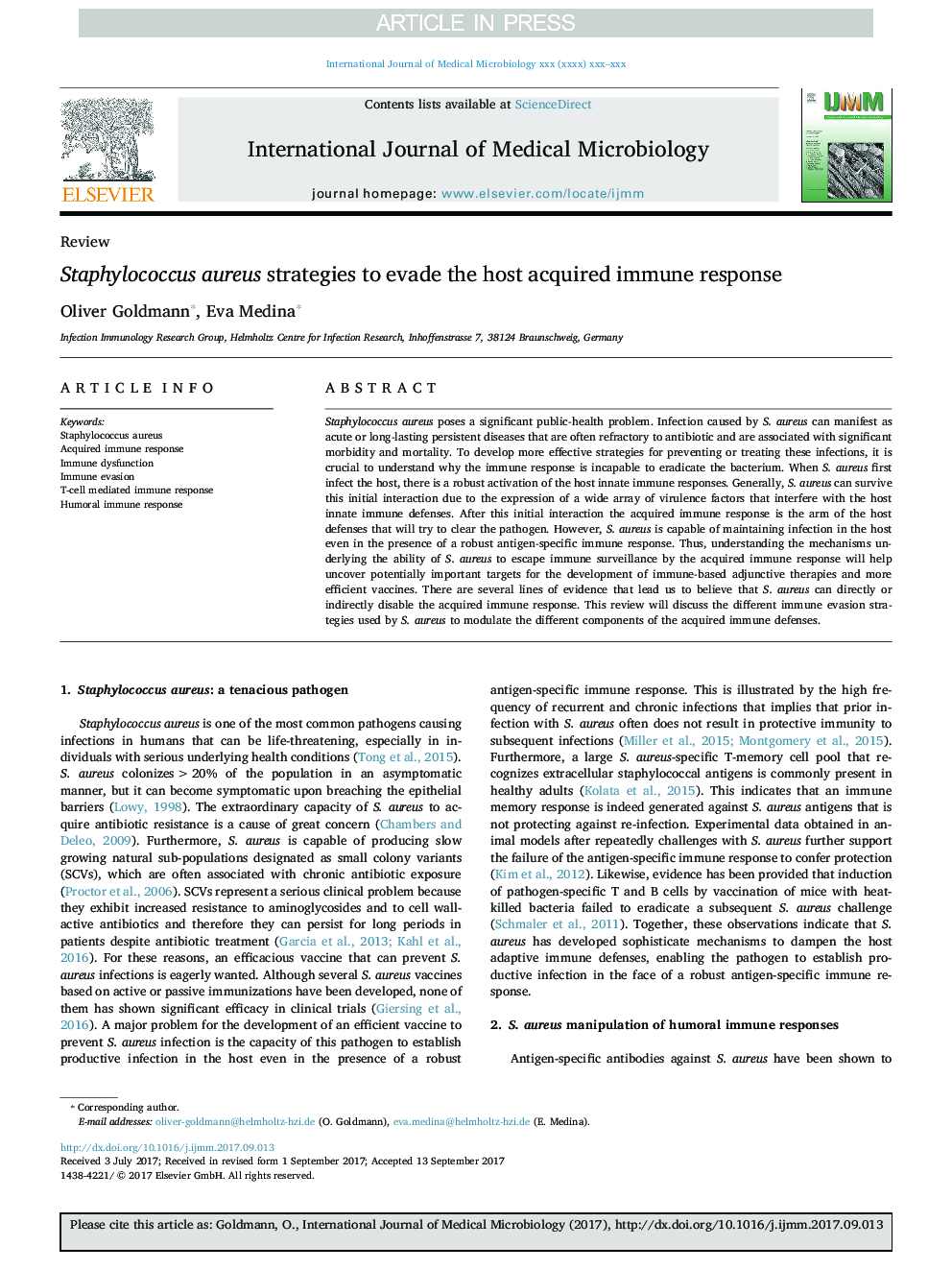| کد مقاله | کد نشریه | سال انتشار | مقاله انگلیسی | نسخه تمام متن |
|---|---|---|---|---|
| 8384758 | 1543662 | 2018 | 6 صفحه PDF | دانلود رایگان |
عنوان انگلیسی مقاله ISI
Staphylococcus aureus strategies to evade the host acquired immune response
ترجمه فارسی عنوان
استراتژی های استافیلوکوک اورئوس برای فرار از میزبان پاسخ ایمنی را دریافت کرد
دانلود مقاله + سفارش ترجمه
دانلود مقاله ISI انگلیسی
رایگان برای ایرانیان
کلمات کلیدی
موضوعات مرتبط
علوم زیستی و بیوفناوری
بیوشیمی، ژنتیک و زیست شناسی مولکولی
بیوشیمی، ژنتیک و زیست شناسی مولکولی (عمومی)
چکیده انگلیسی
Staphylococcus aureus poses a significant public-health problem. Infection caused by S. aureus can manifest as acute or long-lasting persistent diseases that are often refractory to antibiotic and are associated with significant morbidity and mortality. To develop more effective strategies for preventing or treating these infections, it is crucial to understand why the immune response is incapable to eradicate the bacterium. When S. aureus first infect the host, there is a robust activation of the host innate immune responses. Generally, S. aureus can survive this initial interaction due to the expression of a wide array of virulence factors that interfere with the host innate immune defenses. After this initial interaction the acquired immune response is the arm of the host defenses that will try to clear the pathogen. However, S. aureus is capable of maintaining infection in the host even in the presence of a robust antigen-specific immune response. Thus, understanding the mechanisms underlying the ability of S. aureus to escape immune surveillance by the acquired immune response will help uncover potentially important targets for the development of immune-based adjunctive therapies and more efficient vaccines. There are several lines of evidence that lead us to believe that S. aureus can directly or indirectly disable the acquired immune response. This review will discuss the different immune evasion strategies used by S. aureus to modulate the different components of the acquired immune defenses.
ناشر
Database: Elsevier - ScienceDirect (ساینس دایرکت)
Journal: International Journal of Medical Microbiology - Volume 308, Issue 6, August 2018, Pages 625-630
Journal: International Journal of Medical Microbiology - Volume 308, Issue 6, August 2018, Pages 625-630
نویسندگان
Oliver Goldmann, Eva Medina,
